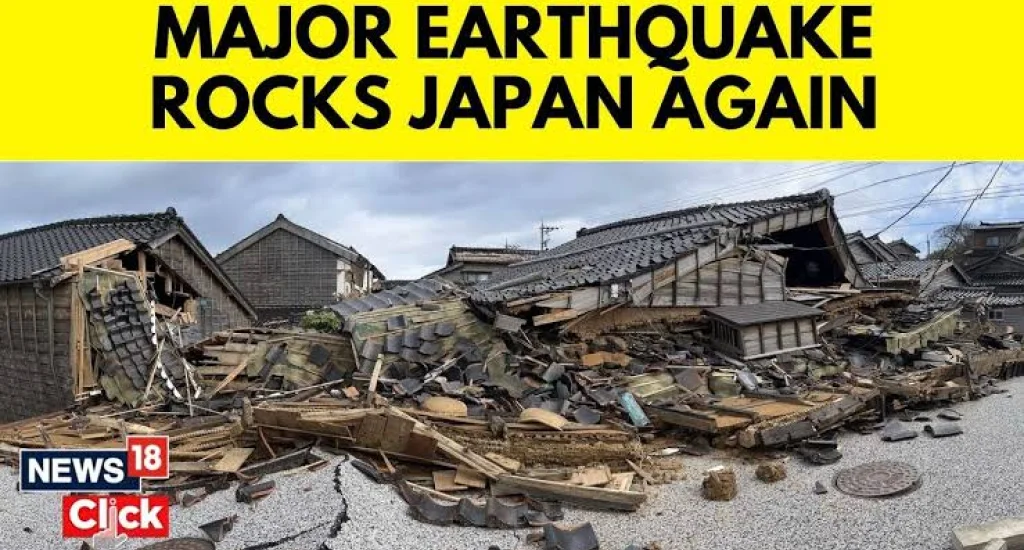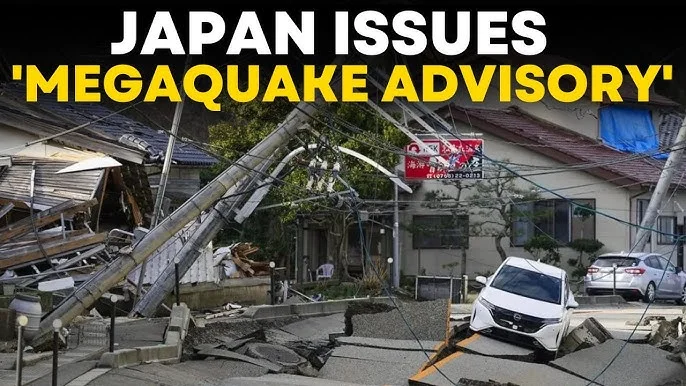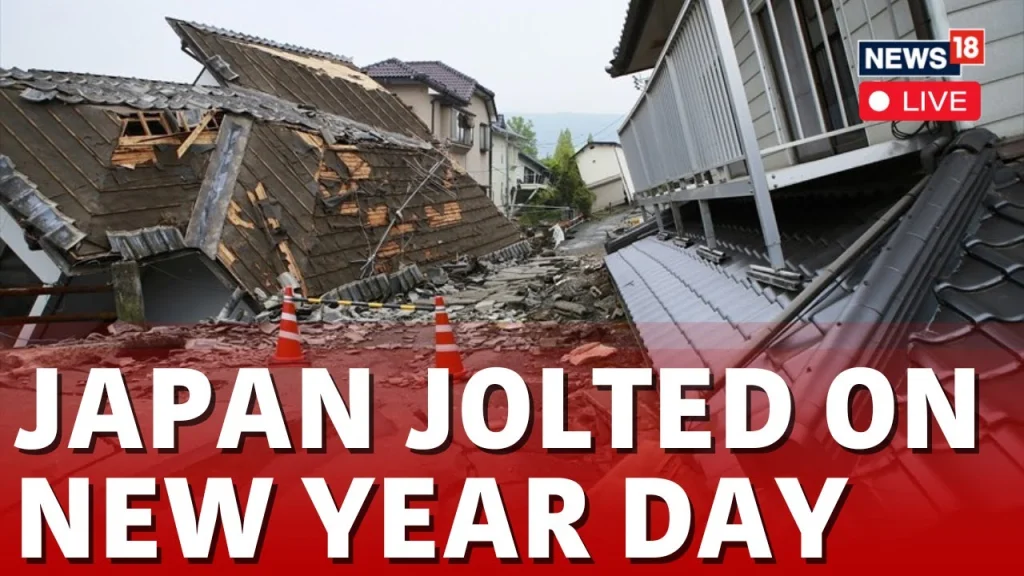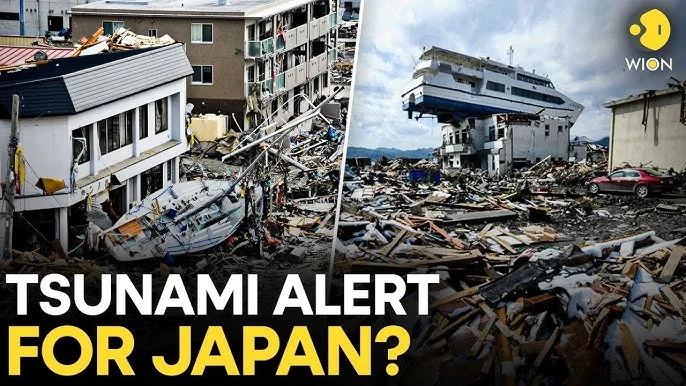
Japan Earthquake Today: 6.7 Magnitude Shakes Northeast Coast
Tsunami waves reach Iwate shores as thousands evacuate — the latest test of a nation's resolve to survive on shifting ground
The phone alerts came in waves, piercing the quiet of a Sunday evening across northeastern Japan. Earthquake. Magnitude 6.7. Tsunami advisory. Evacuate immediately. Within minutes, thousands of residents in Iwate Prefecture were moving — not running in panic, but walking with purpose toward higher ground, toward designated evacuation centers, toward safety rehearsed in countless drills.
The Japan Meteorological Agency and the U.S. Geological Survey confirmed the magnitude 6.7 earthquake struck around 78 miles east of the coastal town of Yamada at a depth of just over six miles, sending tremors through a region still carrying the scars of March 11, 2011.

This is what living on the Pacific Ring of Fire looks like — not the dramatic disaster footage that goes viral, but the practiced response of a society that has learned survival through repetition, engineering, and collective memory.
When the Ocean Responds
The city of Ofunato issued evacuation instructions to 6,138 people in 2,825 households in coastal areas, while municipalities including Kamaishi, Otsuchi, and Rikuzentakata directed residents living outside seawalls to move to safety. The language was direct, urgent, but not hysterical. These communities know the drill because they've lived it before — some during the catastrophic 2011 tsunami that killed nearly 20,000 people.
Tsunami waves measuring 20 centimeters were observed at Ofunato Port at 6:25 p.m. and Kuji Port at 5:52 p.m., while 10-centimeter waves reached Miyako Port at 6:14 p.m. and Kamaishi Port at 5:37 p.m.
Eight inches of water doesn't sound threatening until you understand tsunami physics. These aren't ordinary waves — they carry the entire depth of the ocean behind them, moving with force that can sweep vehicles, collapse structures, and pull people out to sea. The Japan Meteorological Agency warned waves could exceed three feet, and in tsunami science, the first wave is rarely the largest.
By early evening, no injuries had been reported according to the Iwate Prefectural Government — a statistic that might seem unremarkable until you consider the alternative. A magnitude 6.7 earthquake generating tsunami waves in a populated coastal region could easily have produced casualties. That it didn't is testament to systems built through hard-won experience.
Much like infrastructure failures that test institutional preparedness, natural disasters reveal which systems work and which merely look good on paper.
A Day of Relentless Tremors
Sunday's major quake wasn't an isolated event but the crescendo in a symphony of seismic activity that had been building throughout the day. Earlier that morning, a shallow magnitude 5.6 earthquake struck at 7:15 a.m., followed by magnitude 5.1 aftershocks at 7:26 a.m. and 9:17 a.m., all in the North Pacific Ocean near Sendai.
A significant magnitude 5.3 foreshock had struck at 5:29 a.m. — though it only became a "foreshock" in retrospect, after the larger evening quake confirmed these weren't standalone events but warning tremors preceding something more substantial.
In the past 24 hours alone, Japan experienced 660 earthquakes, including two quakes of magnitude 6.0 or above, 11 quakes between 5.0 and 6.0, and 20 quakes between 4.0 and 5.0. Most went unfelt by the general population, detected only by Japan's sophisticated network of seismometers that blanket the archipelago.
For perspective: based on data from the past 25 years, Japan averages about 55,000 earthquakes annually, or roughly 27.6 earthquakes per day of magnitude 2.0 or higher. Living in Japan means accepting that the ground beneath your feet is never truly still.
The Infrastructure That Saves Lives
East Japan Railway reported the Tohoku Shinkansen briefly lost power, suspending operations between Sendai and Shin-Aomori stations. But this wasn't a failure — it was the system working exactly as designed. Japan's bullet trains are equipped with seismometers that detect the initial P-waves of an earthquake and automatically halt trains before the more destructive S-waves arrive.
Seconds of warning translate to trains stopping safely rather than derailing at 200 miles per hour. It's engineering that assumes earthquakes will happen and designs accordingly — not hoping to prevent disasters but planning to survive them.
This philosophy extends to building codes that require structures to flex rather than break, evacuation routes marked in every coastal community, and early warning systems that send alerts to millions of smartphones simultaneously. None of it is perfect, but together these layers create resilience that has saved countless lives.
"We cannot stop earthquakes," explains Dr. Takeshi Nakamura, a seismologist at Tokyo University. "But we can choose how we respond. That choice — made through policy, engineering, and culture — is the difference between tragedy and survival."
Why This Region, Why Always
Japan's location at the convergence of four major tectonic plates — the Pacific, Philippine Sea, Eurasian, and North American plates — makes seismic activity not just common but inevitable. The Pacific Plate, moving westward at roughly 8-9 centimeters per year, slides beneath the North American Plate in a subduction zone that runs parallel to Japan's northeastern coast.
This geological process builds enormous pressure over decades or centuries until sections of the plates suddenly slip, releasing energy as earthquakes. When that slip occurs beneath the ocean and vertically displaces water, the result is a tsunami — exactly what happened Sunday evening.
A total of 10,244 earthquakes with a magnitude of four or above have struck within 300 kilometers of Japan in the past 10 years, averaging 1,024 per year or 85 per month. Statistically, this means a significant earthquake occurs near Japan roughly every eight hours.
Most are too deep, too far offshore, or too small to impact daily life. But the constant background hum of seismic activity means every resident lives with the knowledge that the next big one could arrive at any moment — during dinner, while sleeping, in the middle of a workday.
Similar patterns of persistent challenge play out across different contexts, as seen in how systems must adapt to relentless pressure and unexpected surges.

The Shadow of 2011
Every earthquake off Japan's northeastern coast carries weight beyond immediate physical danger. The geography is identical to March 11, 2011, when a magnitude 9.1 earthquake generated a tsunami that killed nearly 20,000 people and triggered the Fukushima nuclear disaster.
That catastrophe fundamentally transformed Japanese disaster preparedness. Seawalls were reinforced to heights that would have seemed absurd before 2011. Evacuation routes were redesigned with the understanding that minutes matter. Early warning systems were expanded and refined. And perhaps most importantly, cultural attitudes shifted — the recognition that even small tsunami warnings demand immediate response because the ocean's behavior remains partially unpredictable.
The strongest recent earthquake of the past 10 years near Japan occurred on January 1, 2024, with a magnitude of 7.5 striking 88 kilometers north of Toyama. That New Year's Day earthquake killed more than 200 people and destroyed thousands of homes, demonstrating that even with sophisticated preparedness, Japan's seismic vulnerability remains an existential reality.
Sunday's evacuation orders triggered not just physical movement but psychological memory. Parents who lived through 2011 grabbed their children with an urgency shaped by trauma. Elderly residents moved toward evacuation centers they hoped never to need again. Emergency responders took positions knowing that complacency kills and that treating every warning as serious is the only defensible approach.
The Human Cost of Constant Vigilance
There's a psychological dimension to living under perpetual seismic threat that rarely appears in disaster statistics. The alert sounds. Your heart rate spikes. You assess: How strong? How close? Do I evacuate? Do I shelter in place?
For residents of Iwate Prefecture, these decisions aren't theoretical exercises — they're lived reality repeated dozens of times per year. The cumulative stress of constant vigilance takes a toll that's difficult to quantify but impossible to ignore.
Yet life continues. Schools operate. Businesses function. Fishermen head to sea. Because abandoning one of the world's most seismically active regions isn't realistic for a densely populated island nation with limited habitable land and centuries of cultural history rooted in these specific places.
The alternative to leaving isn't passive acceptance but active preparation. Building codes adopted after 1981 require structures to withstand massive shaking. Schools conduct regular earthquake drills where children learn to duck under desks and evacuate in orderly lines. Coastal communities maintain evacuation routes and designated safe zones marked with signs in Japanese and pictograms understandable to foreign tourists.
It's not perfect. Older buildings constructed before modern codes remain vulnerable. Rural areas with aging populations face challenges evacuating elderly residents quickly. And no amount of preparation fully addresses the psychological impact of knowing that catastrophe could strike without warning at any moment.
But it works better than any alternative yet conceived. Sunday's earthquake, despite its magnitude and tsunami generation, resulted in no reported casualties. That outcome isn't luck or divine intervention — it's the result of sustained investment in preparedness spanning generations.
The resilience required mirrors challenges faced in other high-pressure environments, much like athletes who must maintain performance while navigating physical vulnerability.
What the Numbers Don't Capture
The strongest earthquake in Japan in the past 24 hours measured magnitude 6.8 and occurred one hour and 20 minutes ago, 126 kilometers east of Yamada — slight variations in reported magnitude reflecting different agencies analyzing the same seismic data using slightly different methodologies.
These technical details matter to seismologists but mean little to the family huddled in an evacuation center waiting for the all-clear. They care about whether their home is still standing, whether the fishing boats survived, whether they can return to normal life or whether everything has changed again.
As of late Sunday evening, the tsunami advisory remained in effect as authorities monitored ocean conditions. The sequence of aftershocks will likely continue for days or weeks, each carrying the potential to be significant in its own right. The cumulative effect can weaken structures already stressed by the initial event, making subsequent tremors more dangerous than they would be in isolation.

Seismologists will spend weeks analyzing Sunday's data, looking for patterns that might offer insight into what's happening along this section of the plate boundary. Was the magnitude 6.7 earthquake the main event in this sequence, or could something larger still follow? The honest answer: nobody knows with certainty, and anyone claiming otherwise is either lying or doesn't understand the science.
The Unanswered Questions
Decades of research have produced sophisticated monitoring systems, reliable early warnings, and general understanding of where and why earthquakes occur. But predicting when remains beyond current scientific capability. Whether a moderate earthquake might be a foreshock to something catastrophic cannot be determined until after the fact.
This uncertainty is maddening for people who want definitive answers about future risk. Will there be more earthquakes? Almost certainly — Japan averages dozens per day. Will they be dangerous? Some percentage will be, though most won't. Should coastal residents remain vigilant? Always, because the ocean's behavior following undersea earthquakes remains partially unpredictable.
Living with this ambiguity requires a particular kind of courage — not the Hollywood version where heroes fearlessly charge into danger, but the quiet, sustained courage of people who acknowledge existential threats and choose to build meaningful lives anyway.
Every building constructed to enhanced seismic standards represents an act of defiance against geological inevitability. Every emergency drill conducted in schools is teachers and parents refusing to accept unnecessary risk to children. Every evacuation successfully executed is a community affirming that individual lives matter more than convenience.
"You cannot control the earthquake," a survivor of the 2011 tsunami once told me, standing on ground where her home had been swept away. "But you can decide what happens after the shaking stops. That decision — to be ready, to help each other, to rebuild — that's the only control we have. So we take it seriously."
A Different Kind of Victory
As night fell over Iwate Prefecture Sunday, thousands of evacuees waited in designated safe zones, monitoring their phones for updates, watching the ocean, listening for the all-clear. The tsunami waves that arrived were smaller than feared. Infrastructure held. Communication systems functioned. The death toll remained at zero.
In disaster reporting, we often focus on failures — what went wrong, who didn't prepare adequately, which systems collapsed under pressure. But Sunday's earthquake response represents a different narrative: a society that has learned from catastrophic losses and built systems that work.
The victory isn't dramatic. No last-minute rescues. No heroic sacrifices. Just thousands of people responding appropriately to warnings, infrastructure performing as designed, and a nation demonstrating that preparation matters more than any other factor in determining disaster outcomes.
Japan can't prevent earthquakes. The tectonic forces involved dwarf human capability. But through sustained investment in engineering, policy, education, and shared cultural commitment to collective safety, Japanese society has built systems that dramatically reduce human cost when the earth moves.
Sunday's magnitude 6.7 earthquake, had it struck in a less-prepared region, might have killed dozens or hundreds. In Japan, it killed no one. That difference isn't luck or genetics or any innate Japanese characteristic. It's the result of choices made consistently over decades — choices to invest in earthquake-resistant construction, to mandate regular drills, to maintain early warning systems, to prioritize life safety over short-term cost savings.
Other nations facing seismic risk could make similar choices. Most haven't, either because of resource constraints, political dysfunction, or simple failure to prioritize disaster preparedness until catastrophe forces the issue. Japan's approach isn't easily replicable — it requires sustained investment and cultural buy-in that takes generations to build.
But the fundamental lesson is universal: preparation works. Systems designed to save lives do save lives, if they're built properly and maintained consistently.
As the evacuation orders were gradually lifted late Sunday and residents began returning home, the immediate crisis passed. But everyone knows: the next earthquake is always coming. The only questions are when, where, and how strong.
And in Japan, the answer to that uncertainty isn't paralysis or fatalism. It's preparation, practiced until it becomes instinct, because when the ground beneath your feet can betray you without warning, being ready isn't optional.
It's the price of survival on shifting ground.
For more stories on global events, crisis response, and the resilience of communities facing existential challenges, visit Reporters Bode.
Related Articles



